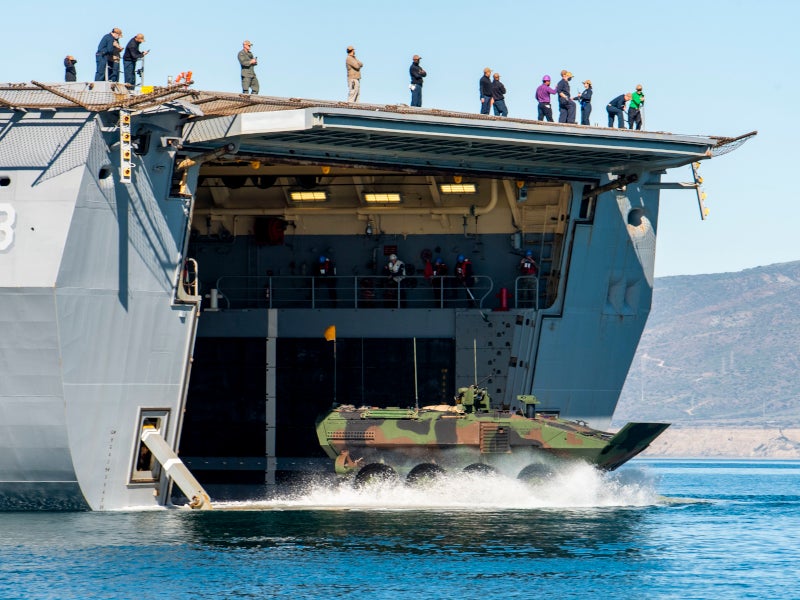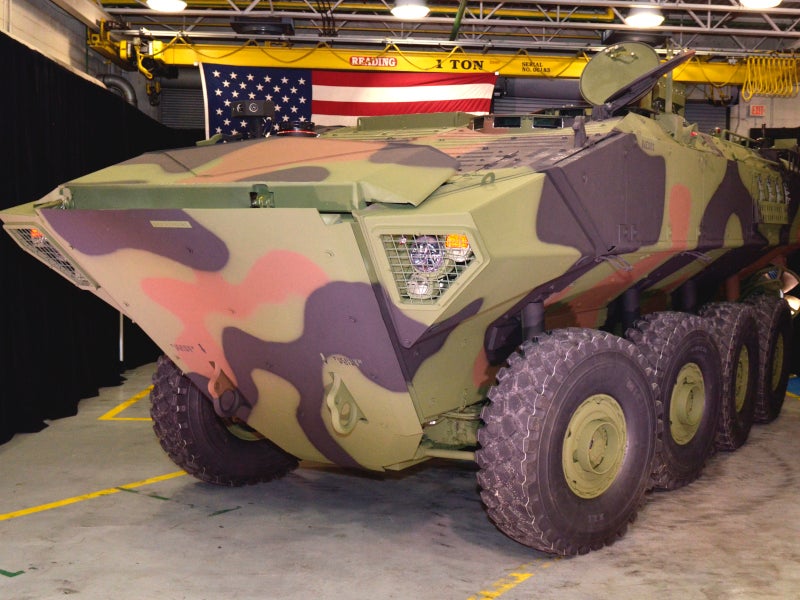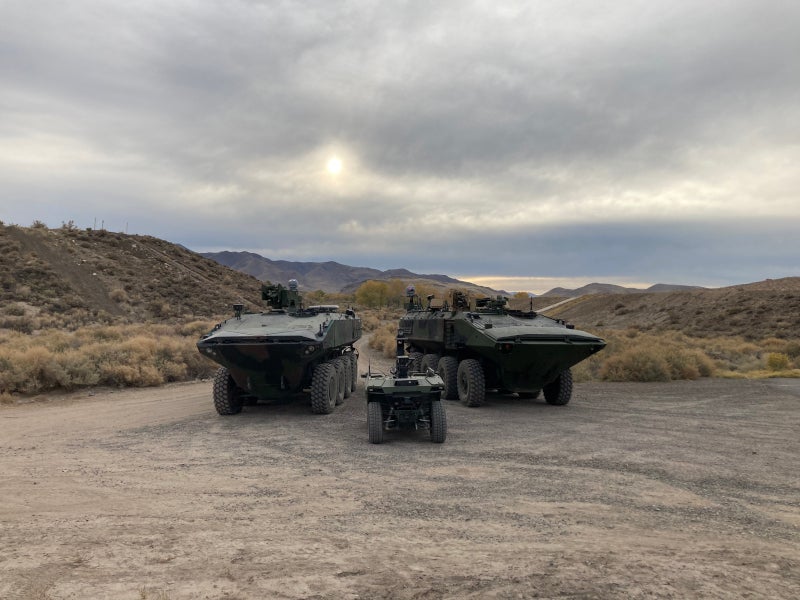Amphibious Combat Vehicle (ACV) 1.1 is a new armoured vehicle designed and manufactured by BAE Systems, a defence company based in the US, in collaboration with Iveco Defence Vehicles, a defence company based in Italy.
The ACV 1.1 programme was initiated by the US Marine Corps (USMC) in 2011 to replace its age-old amphibious assault vehicles (AAV) family, which entered service in 1972.
The new vehicle is designed to offer enhanced survivability and payload features compared to the USMC’s existing fleet of AAV7. The US Marine Corps approved the ACV’s initial operational capability in November 2020.
Orders and deliveries
BAE Systems received a $198m contract for the initial delivery of 30 ACVs in June 2018 with an option to deliver up to 204 vehicles worth $1.2bn.
BAE Systems was awarded the first full-rate ACV production Lot 1 contract option of $184m by the USMC for the first 36 ACV vehicles in December 2020 and the second option for an additional 36 vehicles in
February 2021, bringing the total number of vehicles to 72.
The ACV personnel carrier (ACV-P) version will also be manufactured under the contract.
BAE Systems received a contract modification from the USMC for the second batch of ACVs in full rate production in January 2022. The contract, valued at $169m, encompasses 33 vehicles.
USMC placed a $34.9m contract with BAE Systems to design and develop an ACV-recovery (R) variant in March 2022.
The USMC awarded BAE Systems an $88m contract to manufacture multiple ACV-30 production-ready test vehicles (PRTVs) in August 2022.
The USMC awarded a contract under a third order of full-rate production for additional ACVs to BAE Systems in March 2023. The $256.8m contract includes production, fielding and support costs for more than 25 ACV-P vehicles worth $145.3m and more than 15 ACV-C vehicles, the command and control variant, worth $111.5m.
ACV 1.1 combat vehicle development details
BAE Systems submitted a bid to develop the ACV 1.1 vehicles in May 2015. It received a $103.7m engineering, manufacturing and development (EMD) contract to deliver 16 ACV 1.1 prototypes in November 2015.
The first prototype under the contract was delivered to the USMC in December 2016. Delivery of the 16 prototypes was completed by the end of 2017.
The prototypes underwent rigorous testing before delivery, evaluating factors such as risk mitigation, land mobility, survivability and swim capabilities.
USMC performed developmental testing and operational assessment of the 16 ACVs in the first half of 2017. The vehicles exhibited superior mobility on land and in water during the tests.
BAE Systems was preferred against its competitor, Science Applications International (SAIC), by the USMC in June 2018.
The Stalker and Indago small uncrewed aerial systems (UAS) were successfully tested on an ACV command, control, communication and computers/uncrewed aerial systems (ACV C4/UAS) variant by BAE Systems and Lockheed Martin Skunk Works in February 2023.
ACV made its international debut in May 2023 at the FEINDEF international defense and security exposition.
BAE Systems carried out a technological demonstration of the manned-unmanned teaming (MUM-T) on the ACV C4/UAS in June 2023. The test was performed using the Rex MK II unmanned infantry combat support system manufactured by ELTA Systems, an Israeli defence company and a subsidiary of Israel Aerospace Industries.
Amphibious Combat Vehicle 1.1 design and features
ACV 1.1 is based on an 8×8 wheeled amphibious platform developed by Iveco Defence Vehicles. The armoured hull of the vehicles has been developed using mine-resistant floor materials.
The ACV can be launched and recovered from the sea using a ship. It can perform operations smoothly even in the adverse sea state three conditions.
The vehicle is designed to accommodate three crew members and 13 dismounted troops. It offers enough space to carry supplies required for the incumbents to survive for two continuous days.
The overall length of the vehicle is 9.2m while its width and hull height are 3.1m and 2.9m, respectively. The vehicle’s top speed on paved roads is more than 65m/h.
ACV 1.1 has a gross weight of 35t and can carry a maximum payload of 7,280lb (3,302kg).
ACV 1.1 variants
BAE Systems delivered the first ACV Command (ACV-C) variant to the USMC for testing in February 2021.
The ACV-C is intended to support command and control by providing the greatest levels of communication, coordination and analysis on the battlefield. The fielding of ACV-C will start in late 2023.
ACV-P and ACV-R are the other Marine Corps variants.
The full-rate production of ACV-P was approved in 2021 and the vehicle is being fielded to Marine Corps Fleet Marine Force units. It will replace the Assault Amphibious Vehicle.
ACV-R will offer field maintenance, recovery and repair capabilities to the Assault Amphibian companies and battalion. The variant will replace the Assault Amphibious Vehicle recovery variant (AAVR7A1) on the field.
ACV-30 features 30mm medium calibre cannon armament system and offers lethality and protection to the marines.
BAE Systems was tasked by the USMC to conduct research on a new variant, ACV C4/UAS, in April 2022. The variant features C4/UAS payload, which enhances marine technology in observation, integration and finding targets over the horizon. The Marine Corps received the ACV C4/UAS variant for testing in January 2023.
Armament and self-protection
The amphibious combat vehicle features multiple weapon mounts to house a range of machine guns. It features a remote weapon station, which can be armed with an M2 0.50 calibre machine gun. The hull can be installed with a stabilised dual-mount turret for launching M2/Mark 19 grenades.
ACV 1.1 offers improved survivability features such as blast-resistant hulls and energy-absorbing seats. It protects the occupants from mine blasts, improvised explosive devices (IED), kinetic energy (KE) warheads, small arms fire and shell splinters.
Engine and performance
The vehicle is fitted with a six-cylinder diesel engine with a maximum power production capacity of 690hp. It integrates an advanced H-Drive System developed by Iveco Defence Vehicles and provides the traction required for all the wheels when manoeuvring on land and in water.
The power plant provides a maximum speed of more than 105km/h on paved roads and a maximum amphibious speed of 6kt. The maximum road range of the armoured vehicle when travelling at a speed of 89km/h is 523km. The vehicle offers an amphibious range of up to 12nmi plus a range of 402km on land.
It is fitted with 16R20 tires and can negotiate gradients of more than 60% and side slopes of more than 30%. The curb-to-curb turning radius of the combat vehicle is 36ft (10.97m).
Contractors
Norway-based aerospace company KONGSBERG received the contract to design and manufacture the medium calibre, stabilised remote turret system for ACV-30.





